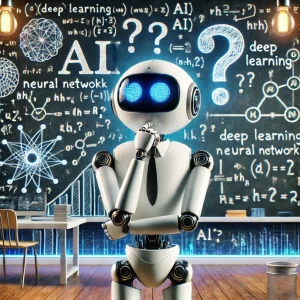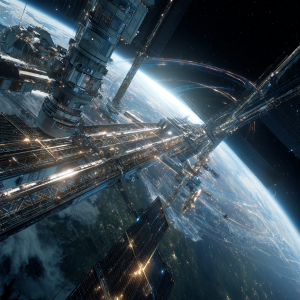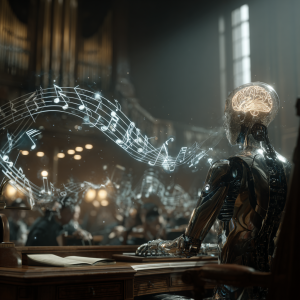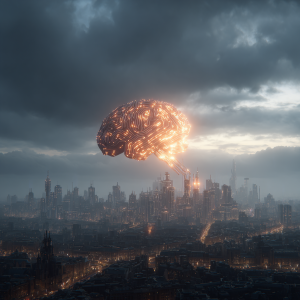Artificial Intelligence is having is rockstar moment, but behind all the flashy headlines and doomsday predictions, one technology is doing the heavy lifting: Deep Learning.
It´s the secret sauce behind self-driving cars, eerily realistic deepfakes, and those chatbots that are getting disturbingly good at mimicking human conversation (yes, I see the irony). But what is deep learning really? Where did it come from? And most importantly, why is it the beating heart of AI´s future? Buckle up, because we´re about to dive deep – pun fully intended.
What is Deep Learning? (And Why It´s Like a Supercharged Brain)
At it´s core, deep learning is a subset of machine learning – which itself is a subset of artificial intelligence. While traditional machine learning involves feeding a model data and explicitly telling it how to interpret patterns, deep learning takes a more autonomous approach. It uses artificial neural networks – inspired by the human brain – to learn and make decisions without human intervention.
Think of it this way: classic machine learning is like training a dog with specific commands. Deep learning, on the other hand, is more like raising a child – it learns through experience, sometimes makes mistakes, but eventually figures things out on its own. (Unlike some actual children, it doesn´t throw tantrums when it doesn´t get its way – yet.)
These neural networks consist of multiple layers of artificial neurons, which process information in a hierarchical manner. The deeper the network (i.e., the more layers it has), the more complex patterns it can recognize – hence the name deep learning.
Deep Learning vs. Neural Networks: What´s the Difference?
If deep learning is the rockstar of AI, then neural networks are its bandmates – the essential foundation making the magic happen. But what´s the exact relationship between the two?
Think of it this way: all deep learning models use neural networks, but not all neural networks are deep learning models.
Neural Networks: The Building Blocks
A neural network is a computational model inspired by the structure of the human brain. It consists of different layers of artificial neurons that process information. While these networks are useful for pattern recognition, they struggle with complex problems due to their limited depth.
Deep Learning: The Supercharged Version
Deep learning takes neural networks to the next level by adding many more hidden layers, making them deep networks. The additional layers allow the model to recognize intricate patterns, making deep learning capable of more complex tasks.
In short: Deep Learning is just a more advanced and powerful form of neural networks. It´s like comparing a simple calculator to a full-fledged AI assistant – both processing numbers, but one is clearly doing way more heavy lifting.
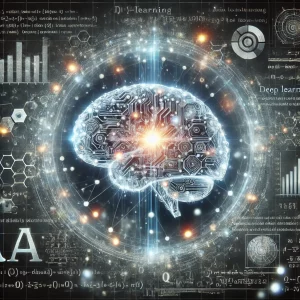
A (Very) Brief History of Deep Learning
While deep learning might seem like a futuristic marvel, the concept of neural networks has been around for decades. Let´s take a quick stroll through history:
1943 – The Birth of Neural Networks:
Neuroscientist Warren McCulloch and logician Walter Pitts developed the first mathematical model of a neuron. (Spoiler: It was incredibly basic).
1958 – The Perceptron:
Frank Rosenblatt designed the first neural network model capable of leaning from input data. It was promising, but limited – like a toddler who just learned to say “no” and won´t stop.
1989s – Backpropagation Rescues Neural Networks:
Geoffry Hinton, aka the “Godfather of Deep Learning”, refined the technique called backpropagation, allowing neural networks to adjust their own weights and improve over time.
2012 – The Deep Learning Boom:
Hinton´s team won the ImageNet competition with a deep neural network that outperformed all traditional machine learning models. This was deep learning´s “I have arrived” moment.
Today – Deep Learning Everywhere:
From ChatGPT to Tesla´s autopilot, deep learning is now the driving force behind AI´s most advanced capabilities.
Why Deep Learning is AI´s Secret Weapon
Now that we know what deep learning is, let´s talk about why it matters. Spoiler: it´s changing everything.
1. Deep Learning Makes AI Smarter (and More Independent)
Traditional AI required explicit programming – humans had to tell it exactly what to do in every situation. Deep learning, however, allows AI to learn from data, improving itself without needing constant human supervision. This means AI can now understand natural language (think Siri, Alexa or ChatGPT), recognize faces, objects and emotions (hello, Face ID) and detect patterns in massive amounts of data, from stock market trends to medical diagnoses.
This ability to learn and adapt is why deep learning is so crucial for AI´s future – it´s what separates “useful AI” from “glorified calculator”.
2. Deep Learning Fuels Automation (And Might Steal Your Job … or Not?)
Deep Learning is the engine behind automation on a scale we´ve never seen before. Whether it´s robots in factories, self-driving cars, or AI lawyers reviewing contracts, deep learning is eliminating the need for human intervention in countless industries.
Before you panic, though, remember: AI isn´t here to take your job – it´s here to change it– Just like ATMs didn´t eliminate bank tellers but rather shifted their roles, deep learning will redefine jobs rather than replace them entirely. (Unless you´re a radiologist … then you might want to start looking into AI ethics consulting 🙂
3. It´s Powering the Next Generation of Creativity
Think AI is just about crunching numbers? Think again. Deep learning is now fueling some of the most creative applications we´ve ever seen like Art & Music (AI generated art is winning competitions, and models like OpenAI´s DALL-E can create stunning images from mere text prompts), Writing (AI-generated stories, poetry and even screenplays are emerging (watch out, Hollywood)) and Game Design (Deep learning is being used to create realistic NPCs, generate new levels and even test video games autonomously)
The result? AI is no longer just a tool – it´s becoming a collaborator in creative industries.
4. Deep Learning is Advancing Science & Medicine
Perhaps the most exiting impact of deep learning is its potential to save lives. In medicine, deep learning is already detecting diseases better than human doctors – AI can analyze X-rays and MRIs with stunning accuracy, speeding up drug discovery, finding potential treatments in record time and predicting epidemic outbreaks by analyzing vast amounts of health data.
If AI ends up curing cancer before we do, we´ll just have to accept that deep learning is the real MVP.
5. It´s Making AI More … Human?
Ever noticed how AI chatbots sound more natural lately? That´s thanks to deep learning models like transformers (the tech behind ChatGPT). They analyze context, tone and even humor – though sarcasm is still a work in progress.
This is a game–changer for everything from customer service to virtual assistants to, dare I say, AI companionship. (Yes, people are already forming emotional bonds with AI, and no, I´m not here to judge).
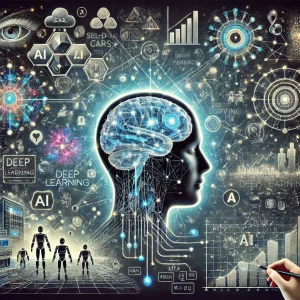
The Limitations and Challenges of Deep Learning
While deep learning has revolutionized AI, it´s not without its problems. Here are some of the biggest challenges deep learning has to face:
1. Data Dependence:
Deep Learning needs vast amounts of high-quality, labeled data. In industries where data is scarce or expensive to annotate, this becomes a major hurdle.
2. Computational Costs:
Training deep learning models is expensive, requiring powerful GPUs or specialized hardware like TPUs (Tresor Processing Units). This makes it inaccessible for smaller businesses.
3. Lack of Interpretability:
Deep Learning models often function as black boxes, meaning we don´t fully understand how they make decisions. This is a critical issue in fields like healthcare and law, where transparency is essential.
4. Bias and Ethical Concerns:
If the training data is biased, the AI will be too. This has led to major controversies, such as biased facial recognition systems and discriminatory algorithms.
Despite these challenges, researchers are actively working on solutions, such as explainable AI (XAI) to improve transparency and techniques like self-supervised learning, which can reduce the need for large labeled datasets.
The Future of AI: What´s Next for Deep Learning?
Deep learning isn´t slowing down – if anything, we´re just getting started. Here´s what to watch for in the near future:
- More Efficient AI. Deep learning models are powerful but energy-hungry. Expect new developments in neural network efficiency to make AI greener and faster.
- Better General Intelligence: Right now, AI is highly specialized. The next step? AI that can think more broadly – like a human (but hopefully without the existential dread).
- AI Ethics & Regulations: As deep learning gets more powerful, governments and companies will have to figure out how to regulate it without stifling innovation.
One thing is clear: deep learning is not just shaping AI´s future – it is AI´s future.
Final Thoughts

Should you be excited or terrified? Deep learning is one of the most powerful and transformative technologies ever created. It´s pushing AI forward in ways we never imagined, from revolutionizing medicine to making AI chatbots almost indistinguishable from humans.
So, should you be excited? Absolutely. Should you be terrified? Maybe just a little – but only if you work in a job that involves a lot of repetitive tasks.
One thing´s for sure. Deep learning isn´t going anywhere. The only question left is – are you ready for what comes next?
Stay curious, stay informed, and let´s keep exploring the fascinating world of AI together.
This post was written with the help of different AI tools.
Recommended Read
Disclaimer: The links provided on this blog lead to external websites that are not under my control. I do not guarantee the accuracy, or the content of those sites. Visiting these sites is at your own discretion and risk.

